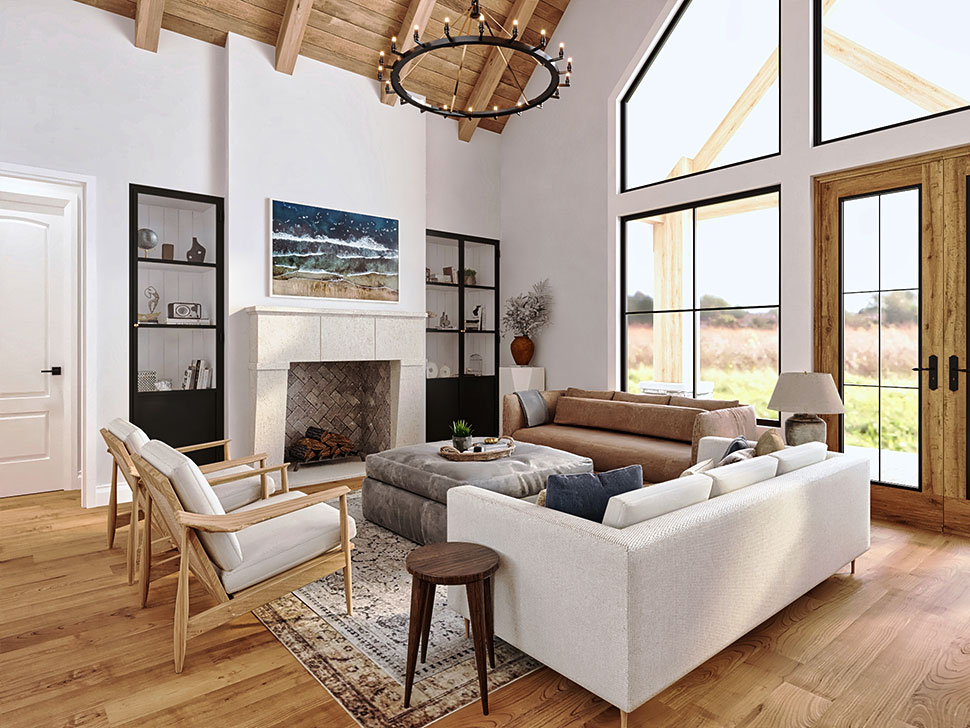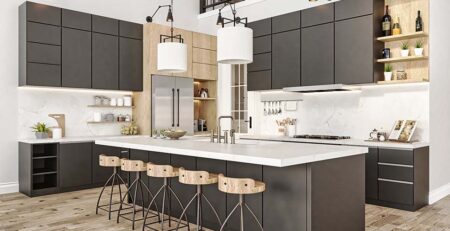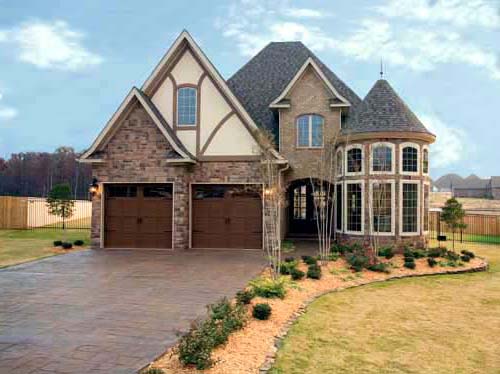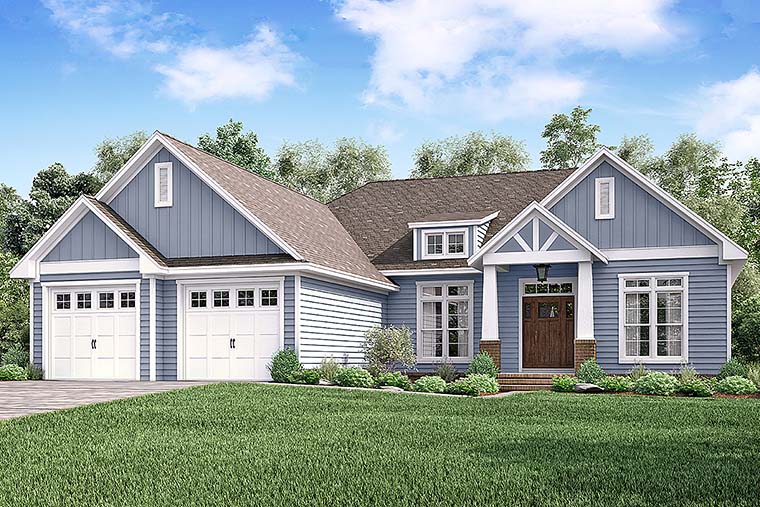How to Make Your Home Look Designer on Any Budget
By the time you’ve furnished the main rooms and established a basic style, the next step is layering in the details that make a home feel polished. Interior designers often call this phase the “finishing layer,” where lighting, textures, and accessories come together to transform a space from functional to memorable. Even without a professional, you can achieve the same effect by focusing on balance, proportion, and purposeful choices. This article, the final part of our three-part series, explores advanced decorating strategies to elevate your home—whether your budget is economy, standard, or premium. (Featured image – House Plan 72273. Click here to see more interior photos of house plan 72273.)
Lighting as a Design Element
Lighting does more than brighten a room—it sets mood and highlights architectural details. Many homeowners stop at overhead fixtures, but layering light sources adds depth and atmosphere. Start with ceiling lighting, then add table lamps, floor lamps, and accent lighting such as sconces or under-cabinet strips. This approach works at every budget: economy shoppers can choose affordable lamps at discount retailers, standard homeowners can invest in designer-inspired fixtures, and premium budgets allow for custom or smart lighting systems that integrate with whole-home automation.
Don’t underestimate the impact of dimmers and warm-toned bulbs. These small adjustments can make a living room cozier or a dining room feel more inviting with minimal effort.
Color, Texture, and Layering
A successful interior scheme doesn’t rely solely on color—it blends texture and pattern to create interest. For an economy budget, layering might mean mixing affordable cotton throw pillows, a textured area rug, and woven baskets. At the standard level, linen curtains, upholstered chairs, and patterned rugs bring tactile richness. Premium homeowners can add silk draperies, handcrafted rugs, or textured wall treatments such as grasscloth or paneling. Each option contributes to depth and warmth, making the home feel intentionally styled.
When in doubt, follow the 60-30-10 rule: 60% of a dominant color, 30% of a secondary shade, and 10% as an accent. This helps maintain balance while still allowing creativity.
Art, Accessories, and Personal Touches
Accessories tell the story of your home. While furniture anchors a space, accessories give it personality and meaning. Economy decorators can frame family photos, use DIY art, or repurpose vintage finds. Standard decorators may add curated wall art collections, mirrors to reflect light, and stylish coffee table books. Premium decorators often choose original artwork, sculptures, or custom framing for a refined look. No matter the tier, accessories should feel intentional—avoid overcrowding and instead select pieces that spark joy or inspire conversation.
Plants are another accessible accessory at all budget levels. Whether it’s a small succulent on a shelf or a statement fiddle-leaf fig, greenery breathes life into every room and softens hard lines.
Furniture Placement and Flow
Even with the best furniture, poor placement can ruin a room’s feel. Designers often think in terms of zones: seating areas, dining spaces, and traffic flow. For economy budgets, it may be as simple as rearranging what you already own to improve flow. Standard decorators might add accent chairs or modular pieces to better define areas. Premium options include custom-built furniture or statement pieces designed for scale. The goal is always the same: create inviting pathways, conversation zones, and balance within each space.
Pro tip: Always leave 18 inches between a sofa and coffee table for comfortable movement, and make sure rugs are large enough for at least the front legs of furniture to sit on them.
Bringing It All Together Room by Room
In the living room, finishing touches might include layered lighting, a styled bookshelf, and a rug that anchors the seating area. In the bedroom, think accent pillows, layered bedding, and statement lamps. Kitchens benefit from pendant lighting, decorative bar stools, and even upgraded cabinet hardware. Bathrooms can feel more upscale with framed mirrors, stylish storage baskets, and coordinated linens. These small details elevate each space, regardless of budget.
When to Splurge and When to Save
Smart decorating means knowing where to allocate funds. Invest in items that are used daily and seen most often—sofas, mattresses, and dining tables. Save on trend-driven accessories like pillows, rugs, or wall décor that can be replaced affordably. Premium decorators may splurge more broadly, but the principle remains: balance long-term investments with easy-to-update accents.
This approach keeps your home flexible as styles change, while still offering the comfort and beauty you want day to day.
Final Thoughts
Decorating without an interior designer doesn’t mean settling for less. By focusing on lighting, layering, accessories, and thoughtful placement, you can achieve a space that feels cohesive, stylish, and deeply personal. Whether your budget is economy, standard, or premium, the finishing layer is where your home truly comes to life. It’s where the practical foundations you built in earlier stages merge with creativity and self-expression, creating a home that feels complete.
👉 Ready to bring your dream home to life? Browse our house plan collection to find the perfect starting point for your design journey.









Leave a Reply